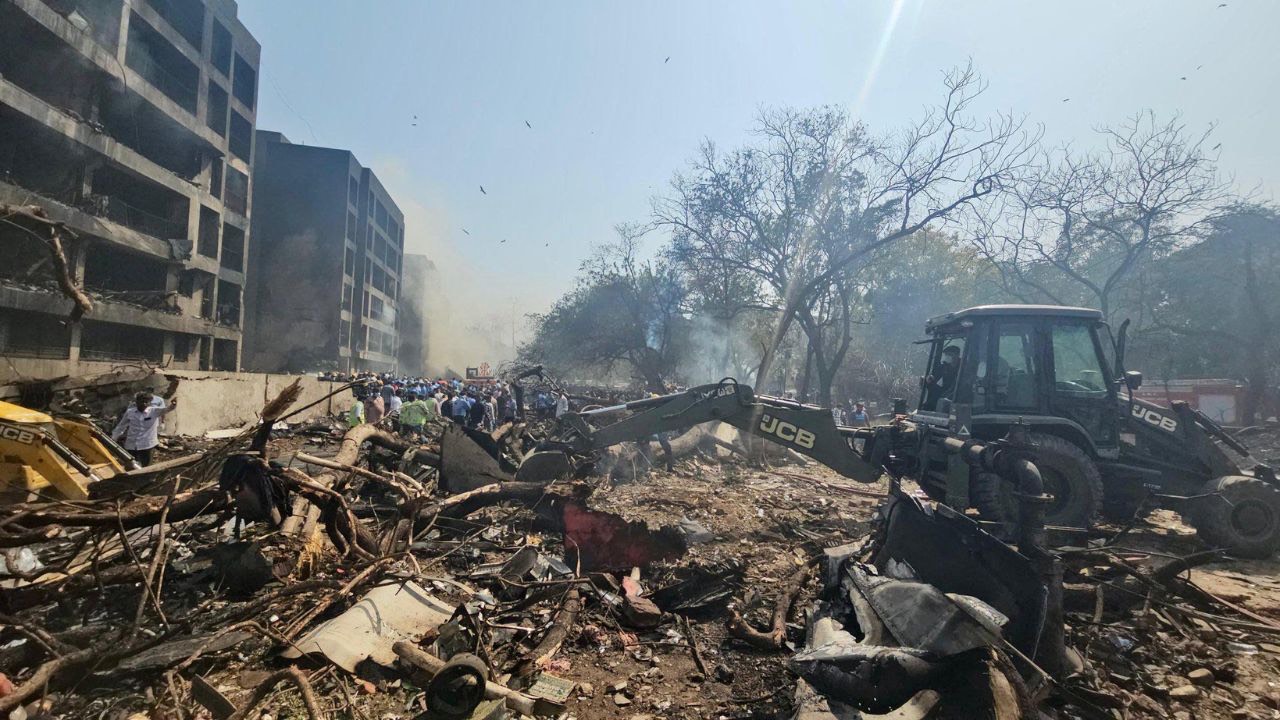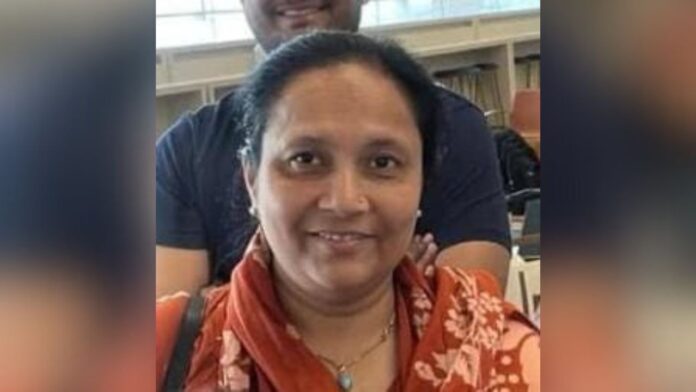Syed Abubakr & Sumit Singh, TwoCircles.net
Ahmedabad (Gujarat): The city was forever scarred on June 12 by one of the deadliest aviation disasters of the 21st century. Air India Flight AI171, a Boeing 787-8 Dreamliner bound for London’s Gatwick, crashed 30 seconds after take-off from Sardar Vallabhbhai Patel International Airport, slamming into the hostel complex of BJ Medical College in the Meghaninagar neighbourhood.
The catastrophe claimed 279 lives – 241 of the 242 passengers and crew aboard, and 38 people on the ground, including medical students, a doctor’s pregnant wife and residents. Amid the flames, smoke and heartbreak, the city’s ordinary citizens rose as extraordinary heroes – becoming first responders, offering shelters and providing solace to grieving families.
The London-bound Dreamliner, carrying 230 passengers and 12 crew members, issued a desperate “Mayday” call less than a minute after take-off, reaching a maximum altitude of just 650 feet before plummeting into the medical college hostel. The impact unleashed a fireball, intensified by the plane’s heavy fuel load, reducing the hostel’s dining area to rubble and sending thick black smoke coiling over Meghaninagar.
CCTV footage captured the chilling 30-second flight, showing the aircraft skimming low over the city before its fiery end. The crash site, just beyond the airport’s perimeter, became a scene of carnage – with charred bodies, mangled wreckage and shattered lives.
Emergency services, including six National Disaster Response Force (NDRF) teams, fire brigades and the police, mobilised swiftly, but it was the locals who reached the site first, driven by raw courage.
Prince Pattani, a young resident living 100 metres from the crash site, was among them. “The explosion shook my house. I and my friends ran to the hostel,” he recalled.
With a team of boys, Prince entered the canteen, where the plane had struck during lunchtime. “Mostly students were there, some families and a small girl child trapped under debris,” he said.
His team removed gas cylinders to prevent explosions and cleared walls and mirrors to free survivors.
Sanjay Patni, another local, braved the haze to rescue three medical students. “Everything was burnt; smoke was everywhere. I heard their cries and pulled them out, guiding them to ambulances,” he said.
These acts of bravery bridged the critical gap before professional responders could fully deploy, with residents using bedsheets to douse flames and ferrying the injured to hospitals in private vehicles.
Within 20 minutes of the crash, Sahal Qureshi, a senior journalist based in Ahmedabad who reported the tragedy for The Washington Post, arrived at the site. “Dead bodies were charred beyond recognition. Locals came with clothes to cover them, not to gawk but to help,” he said.
He witnessed a rare unity – Muslim and Hindu social organisations worked side by side, offering a “message of love amid tragedy”. He saw residents from nearby buildings rush to the scene – not to crowd, but to lend a hand.
“They felt it was their tragedy. One man, Baloo Rajput, found a bag of gold jewellery in the debris and handed it to the police, a small but an act of integrity amid chaos,” he added.

The Ahmedabad Haj House, an eight-story facility, opened its top five floors to provide shelter and relief. Md Talha Saiyed, a section officer, supervised the effort, coordinating with the Haj Committee and NGOs to supply food, water and blankets.
“We saw families broken by grief. Our job was to give them a place to rest and hope,” Talha said.
Volunteers delivered meals to those camped outside Civil Hospital, where victims were taken, and sat with relatives awaiting DNA test results, offering quiet support.
The crash’s toll on the medical community was profound, with at least five MBBS students and a doctor’s pregnant wife among the ground casualties. As the injured flooded the Civil Hospital, blood became a critical need.
Within an hour, 200 volunteers from the NGO Sahaay, alongside the Ahmedabad Red Cross, launched a blood drive – collecting 900 units in eight hours.
Parthil Ghoghari, a 19-year-old Sahaay member active since the COVID-19 pandemic, described the scene, “People lined up at the Red Cross office, waiting patiently to donate.”
The effort not only met medical demands but also symbolised Ahmedabad’s solidarity, with residents of all backgrounds contributing.
Inamul Iraqi, a 62-year-old businessman and social worker, emerged as a guiding force. “I am saddened that Gujarat’s image is stained. We want to wipe the tears of victims,” he said.
Iraqi organised food and relief for families awaiting DNA results, mobilising volunteers to ensure no one went without support. His decades of service – running the Daryakhan Gumbad relief camp during the 2002 Gujarat riots, carrying 198 bodies to their final rest and aiding Bhuj earthquake victims for six months – lent gravitas to his efforts.
“I fund this from my business, no donations. It is my duty as an Indian,” he said.
His friend, Maulvi Habib Ahmed Pathan, 59, joined the relief efforts. Running four madrasas, three schools and a hospital, he supplied essentials to victims’ families.
“We are all human first. This tragedy does not discriminate, so neither do we,” he said.
Together, Inamul and Habib exemplified the city’s ethos of compassion, ensuring families had food, clothing and a shoulder to lean on.
The trauma of the crash extended beyond physical injuries, leaving deep psychological scars on survivours, witnesses and the wider community.
Dr. Deepti Bhatt, a psychiatrist at the Hospital for Mental Health in Ahmedabad, has been at the forefront of addressing this silent crisis through the Tele Manas mental health helpline. “We are working round-the-clock to counsel those affected,” she said.
The 24/7 call center has been inundated with requests for support. “One doctor from the super-speciality quarter called us because he witnessed the tragedy unfold before his eyes,” she shared.
“Another man, a frequent traveller working for an MNC, reached out, asking, ‘Can this happen to me too?’ His fear was palpable,” she added.
Staffed by trained counsellors, the helpline has become a lifeline for those grappling with shock, anxiety and survivour’s guilt – offering a safe space to process the horror of June 12.
A Family’s Unbearable Loss
Among the grieving was Muzaffar Saiyed, who has been offering voluntary IT support to the Haj House since 2014. He lost four members of his family – 46-year-old sister Nafisabanu Saiyed, 24-year-old niece Dr. Taskin Saiyed, 22-year-old Waqueeali Saiyed and 48-year-old Inayatali Saiyed – a British citizen and software engineer.
All but Inayatali held Indefinite Leave to Remain status in the United Kingdom. “I have not received their bodies yet. They were more important than money, and we have had no help from authorities,” he said, his voice breaking.
The Saiyed family’s loss highlights the personal toll felt across Ahmedabad, with many families still awaiting closure.
Qureshi said that nearly 10 bodies remain unidentified as their families yet to provide DNA samples.
“It is a challenge for authorities to trace them,” he said. The slow identification process, reliant on DNA matching due to the bodies’ condition, has prolonged the agony for relatives camped at the Civil Hospital.

Ahmedabad (Courtesy: X/Ministry of Defence, Government of India)
DNA matching has identified 119 victims, with 76 bodies handed over to families as of June 17. The process, slowed by the bodies’ condition, continues to test relatives’ patience.
Air India has established assistance centres in Ahmedabad, Mumbai, Delhi and Gatwick, assigning caregivers to over 400 family members and offering a one-time waiver on rescheduling for affected passengers.
The Tata Group, Air India’s parent company, pledged Rs. 1 crore per deceased passenger’s family, prioritising support over speculation about the crash’s cause.
Air India Former Executive Director Jitender Bhargava lashed out at the Directorate General of Civil Aviation (DGCA), questioning if it has reengineered itself to meet the changed environment.
“I sincerely believe the DGCA has been a weak link. For many years now, almost two decades, it has been headed by a bureaucrat. By the time they learn the job, they are moved on to another position in the bureaucracy. So what we need first is to have somebody who is a professional and who knows everything about what is required to be done and what the requirements of the airlines are. And if airlines are trying to say something or manipulate some kind of thing, he knows the reality,” he said.
“The DGCA is currently a part of the Ministry of Civil Aviation. So, if the minister is to direct something, I do not think the head of the DGCA would have the confidence, ability and competence to say – no, this is not in the interest of Indian aviation,” Bhargava added.
As investigators sift through scorched cables and black box data, the city’s story is already clear – in Meghaninagar, where flames once consumed lives, the spirit of humanity burns brighter. The probe may uncover technical truths, but Ahmedabad’s first responders have already revealed a deeper truth about courage, unity and the power of a community to heal.


